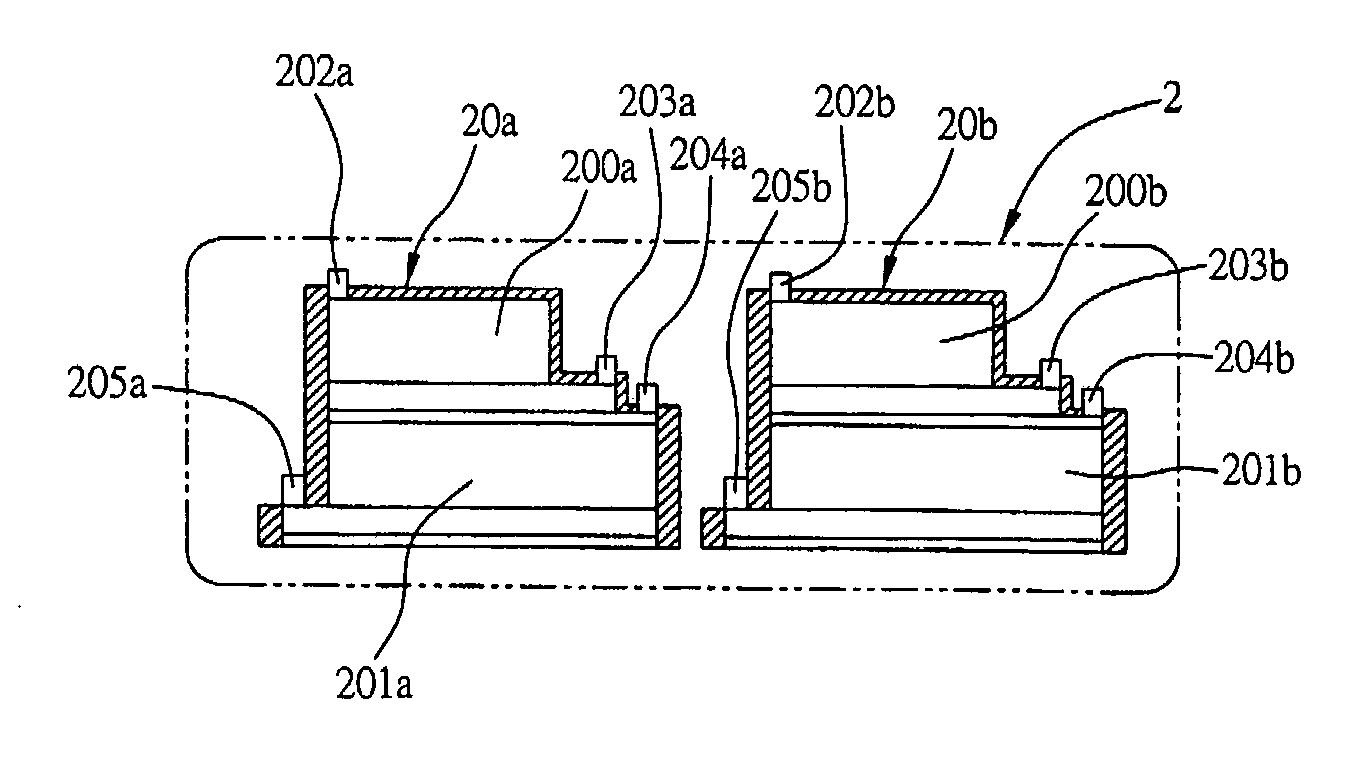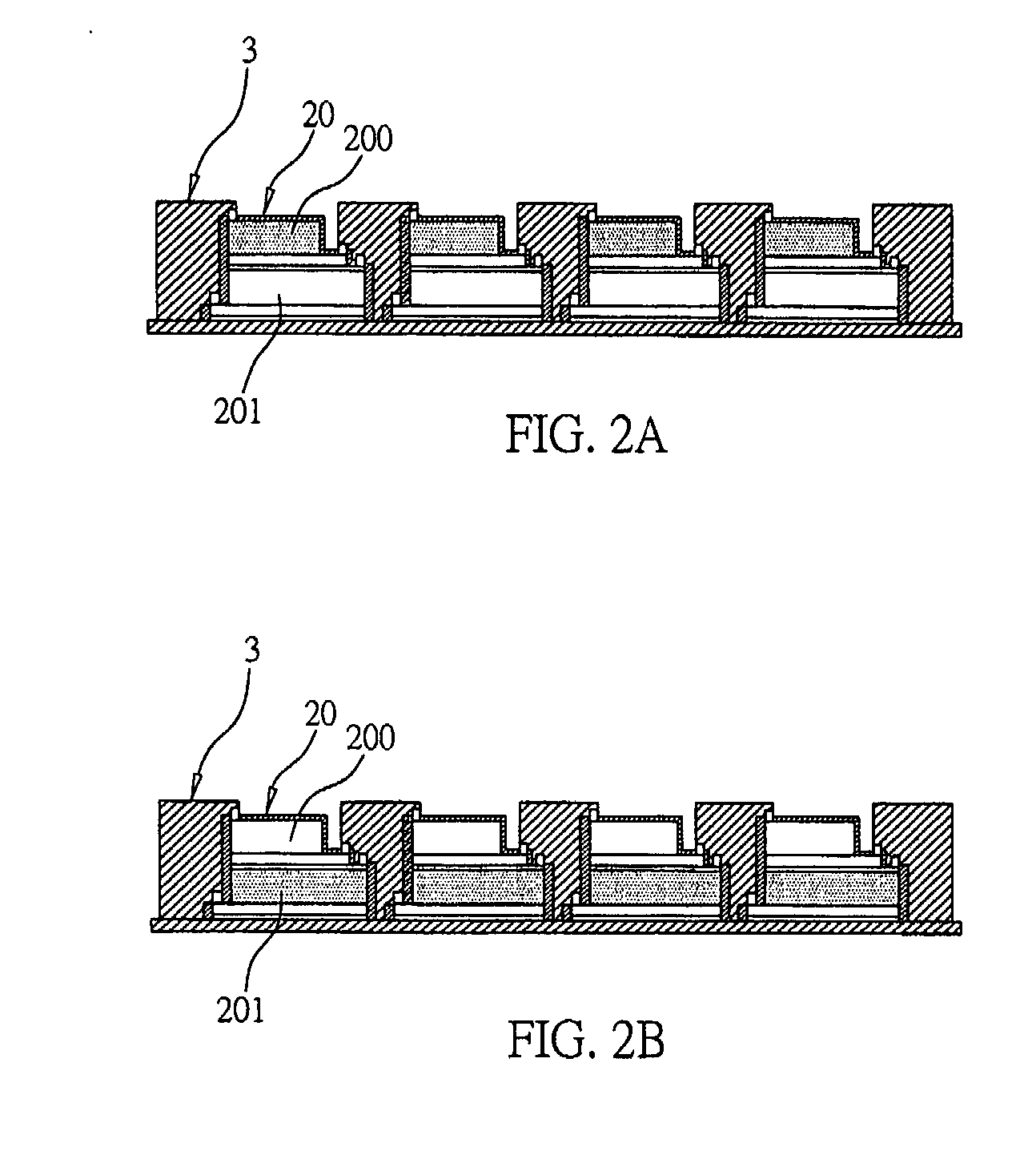Alternating current light-emitting device
a technology of alternating current and light-emitting device, which is applied in the direction of solid-state devices, electric lighting sources, electric light sources, etc., can solve the problems of shortened operating life and even high temperature-induced failure, waste of light-emitting area, and increased mass production difficulty
- Summary
- Abstract
- Description
- Claims
- Application Information
AI Technical Summary
Benefits of technology
Problems solved by technology
Method used
Image
Examples
Embodiment Construction
[0036] The present invention discloses an alternating current light-emitting device applicable to a chip. In the presence of an applied alternating current (AC), the disclosed alternating current light-emitting device is capable of emitting monochromatic light, white light, or colored light to meet user needs. The monochromatic light or colored light is emitted as a result of all-time light emission occurring to a light-emitting surface of the chip. The preferred embodiment is achieved by general electric supply according to the universal electricity standards, under a voltage of 110V, 110V or 220V, at a frequency of 60 Hz or 50 Hz.
[0037]FIGS. 1A and 1B each shows a cross-sectional view of the structure of the alternating current light-emitting device of the present invention. The drawings depict only a single alternating current light-emitting device in this preferred embodiment. The alternating current light-emitting device comprises a substrate 1, an alternating current micro-di...
PUM
 Login to View More
Login to View More Abstract
Description
Claims
Application Information
 Login to View More
Login to View More - R&D
- Intellectual Property
- Life Sciences
- Materials
- Tech Scout
- Unparalleled Data Quality
- Higher Quality Content
- 60% Fewer Hallucinations
Browse by: Latest US Patents, China's latest patents, Technical Efficacy Thesaurus, Application Domain, Technology Topic, Popular Technical Reports.
© 2025 PatSnap. All rights reserved.Legal|Privacy policy|Modern Slavery Act Transparency Statement|Sitemap|About US| Contact US: help@patsnap.com



